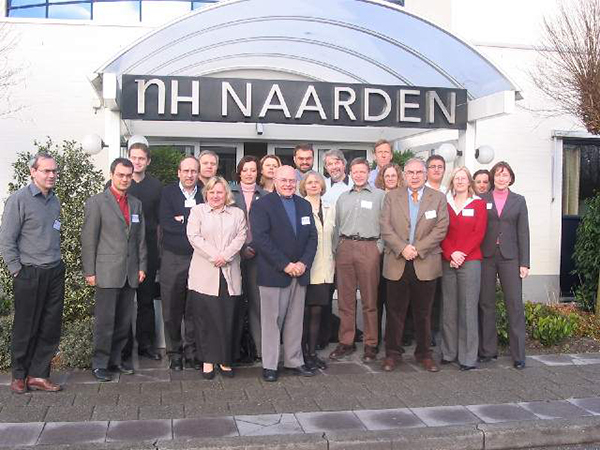Guideline on processing and evaluation of Sural Nerve Biopsies
The 147th ENMC International Workshop on a “Guideline on processing and evaluation of sural nerve biopsies” organized by Claudia Sommer (Würzburg) was held in Naarden, Holland on December 15 – 17, 2006. Fourteen clinicians and scientists from eight European countries and the U.S. participated in the workshop. The workshop is endorsed by the ENMC and by the Peripheral Nerve Society (PNS).
A guideline for the indication of nerve biopsy as well as for its processing and evaluation was considered necessary, since there are at present no European guidelines on this invasive diagnostic procedure. Although there are some national guidelines, these are incomplete and not evidence based. Since diagnostic nerve biopsy cannot be easily repeated in the work-up of peripheral neuropathies, failures due to lack of adequate standards should be avoided.
The Workshop participants collected evidence on the indications for a sural nerve biopsy, on the methods available for sural nerve workup, and on their diagnostic specificity and sensitivity. Evidence tables composed from the literature and personal experience were discussed. Tasks were distributed for the final composition of the guideline.
Consensus was achieved as to the following points:
The aim of this guideline is to provide, as far as available, evidence based guidance about the indication, procedure, processing, reading and interpretation of nerve biopsies.
The target group are all persons referring patients for a nerve biopsy, performing, processing, or reading nerve biopsies
Indications:
- Nerve biopsy should be done for specific reasons. These can be questions about diagnosis, classification, or prognosis.
- Nerve biopsy should not be done before adequate clinical, electrophysiological and laboratory characterization of the patient.
- The leading indication is that of an interstitial pathological process (e.g. vasculitis, inflammation, infection), because it has diagnostic and therapeutic implications
- The patient should be properly instructed, and nerve biopsy should only be done with written consent.
- Requirements for the person evaluating a nerve biopsy:
- Biopsies should be read by professionals with adequate training and experience in reading and interpretation of nerve biopsies
- Adequate clinical information should be provided and additional clinical information should be accessible on request.
- An interactive working relationship with the relevant disciplines involved is encouraged.
- The results should be discussed with clinicians taking care of the patient; regular nerve conferences are recommended.
- Details on the procedures recommended will be published in the final guideline.
Finally, open questions were collected and suggestions for further research were made. One example would be a prospective multicenter outcome study on nerve biopsy, including its relevance for treatment and potential side effects.
A full report of this meeting has been published in Neuro Muscular Diseases. (pdf)
Participants:
Sebastian Brandner (London, England), Peter J. Dyck (Rochester, USA), Catherine Lacroix (Le Kremlin Bicêtre, France), Martin Lammens (Nijmegen, The Netherlands), Laurent Magy (Limoges, France), Svein Ivar Mellgren (Tromso, Norway), Michela Morbin (Milan, Italy), Carmen Navarro (Vigo, Spain), Henry Powell (San Diego, USA), Angelo Schenone (Genova, Italy), Claudia Sommer (Würzburg, Germany), Ersin Tan (Ankara, Turkey), Joachim Weis (Aachen, Germany), Yadolla Harati (Houston, USA).








